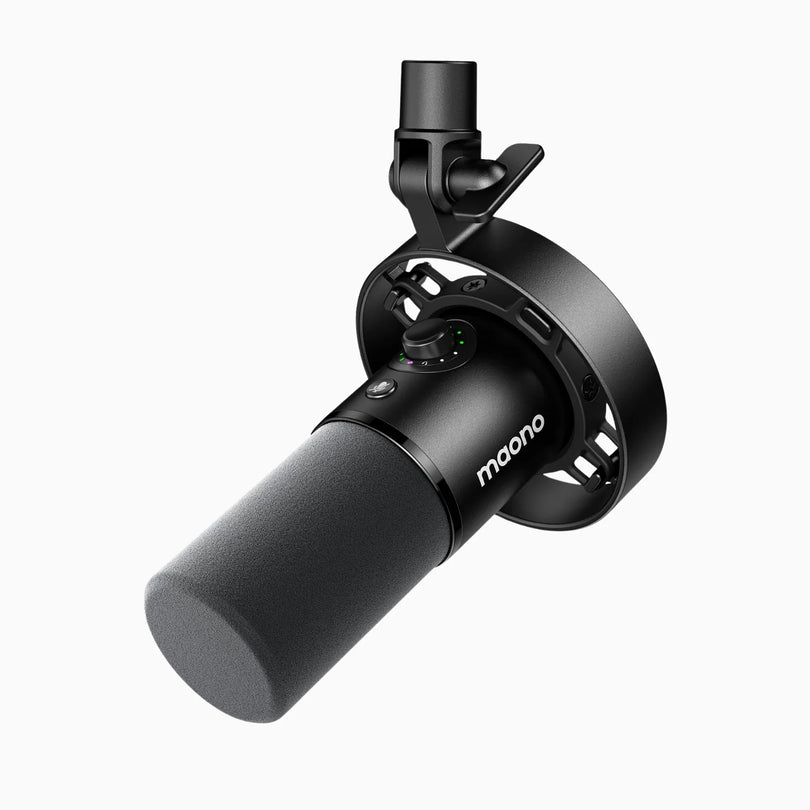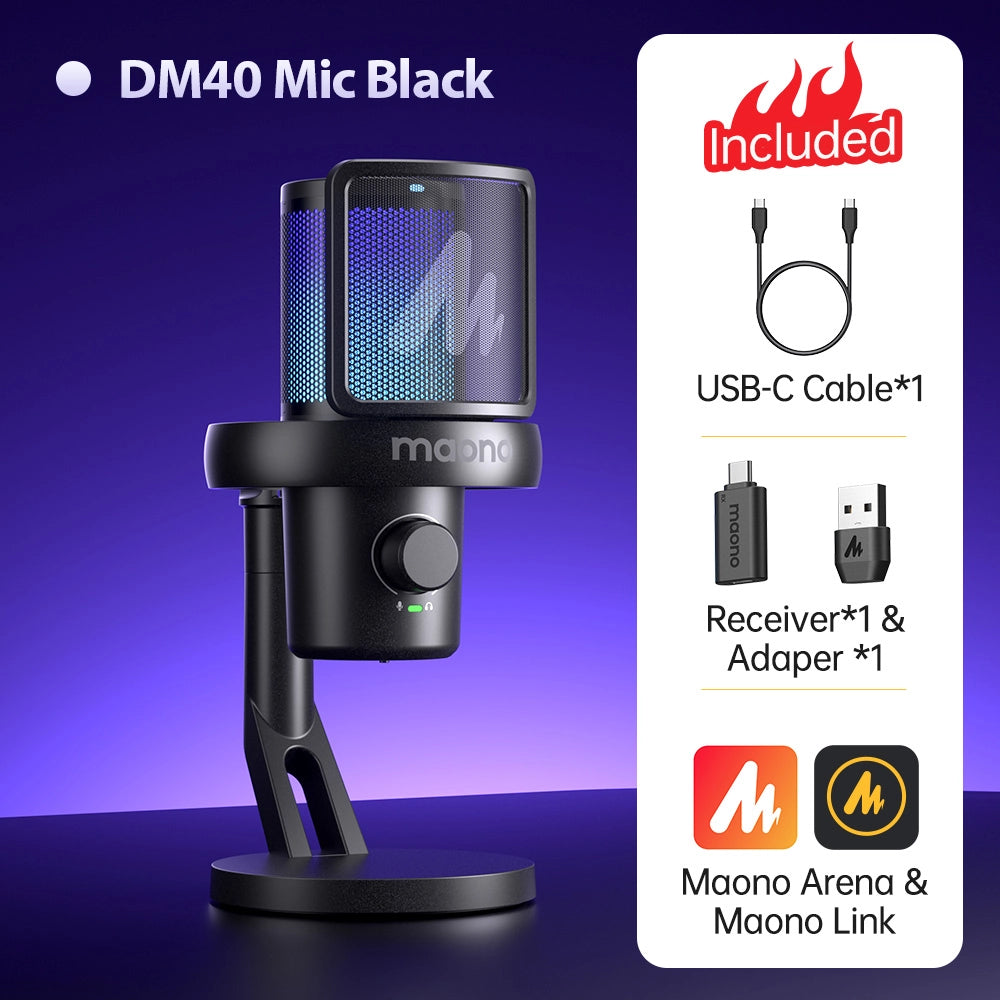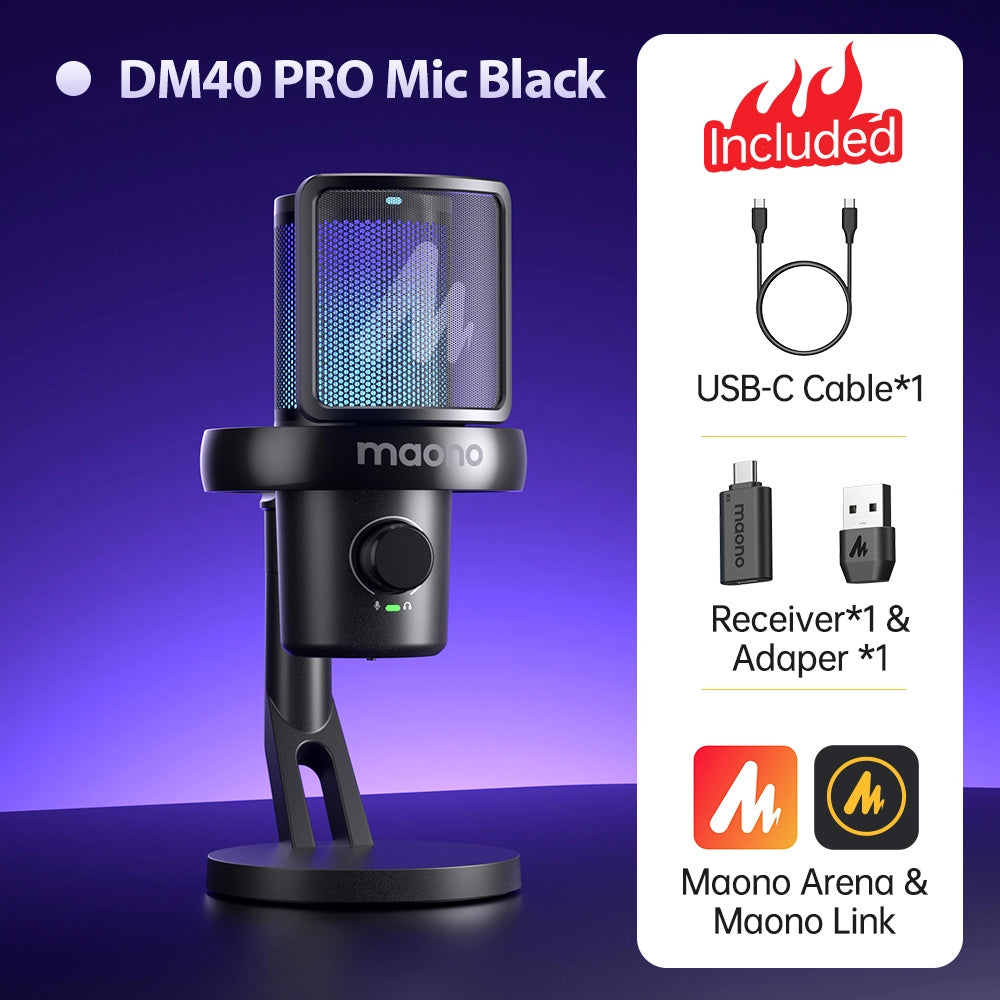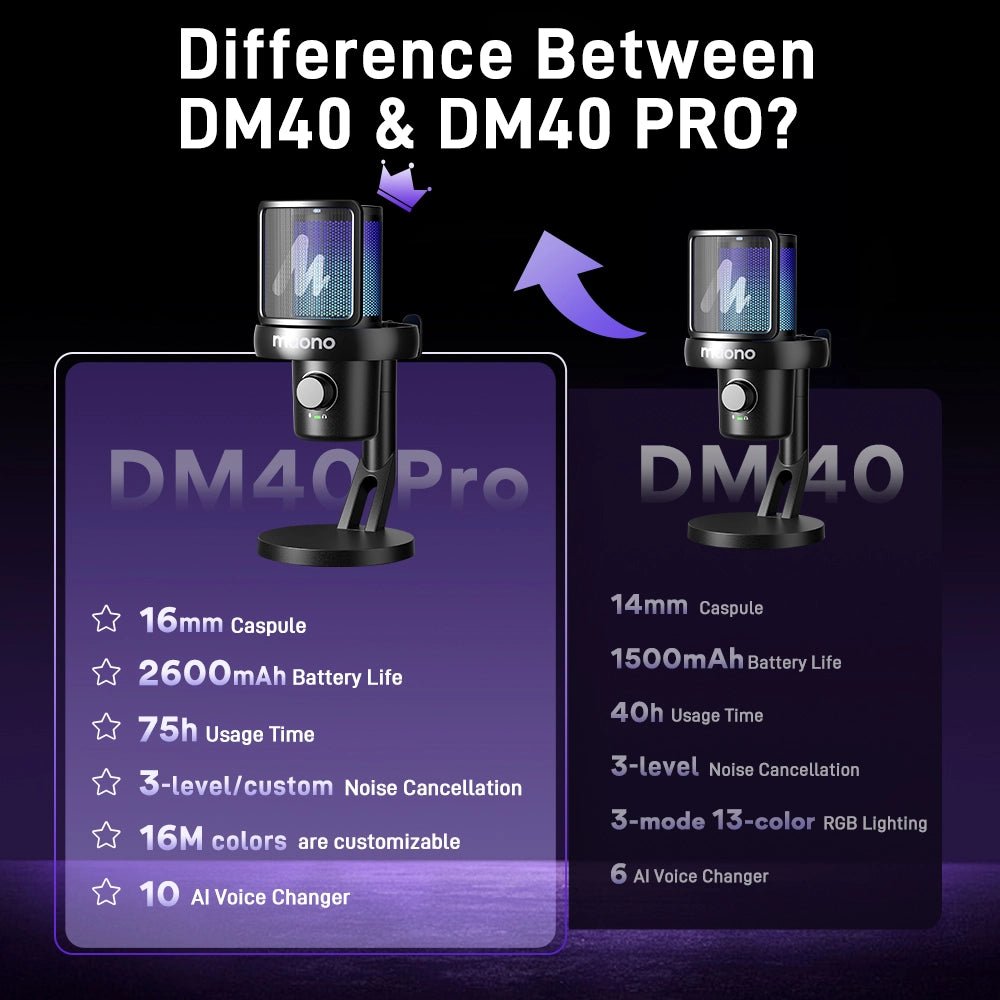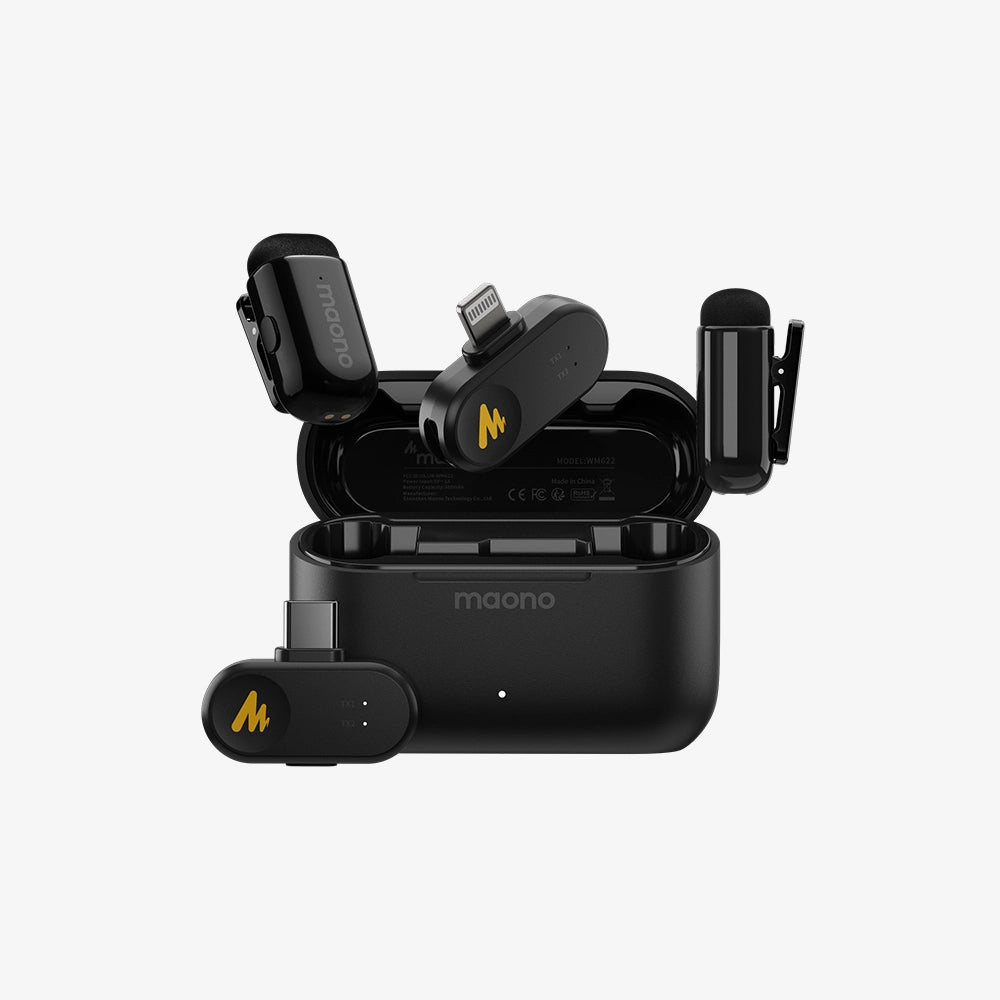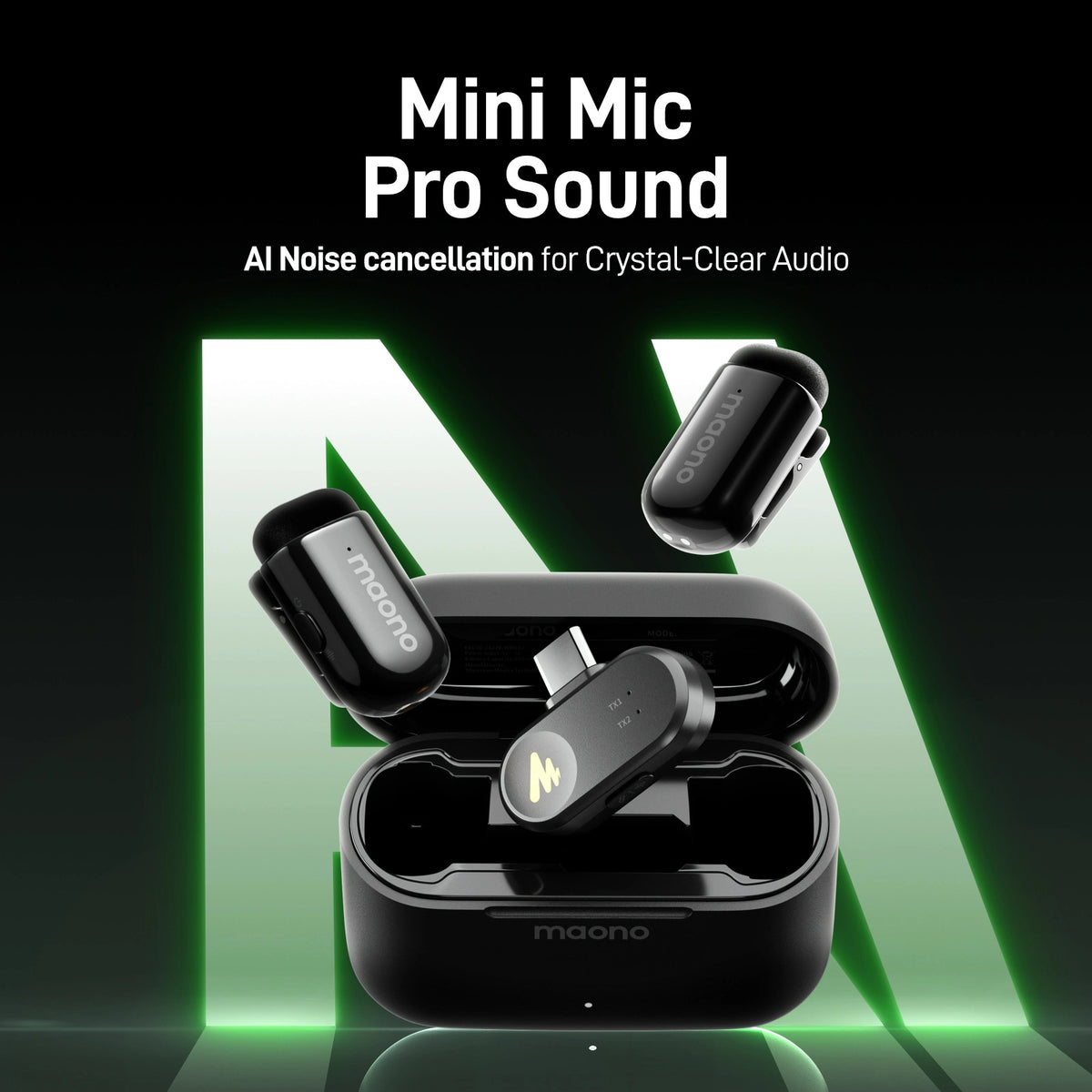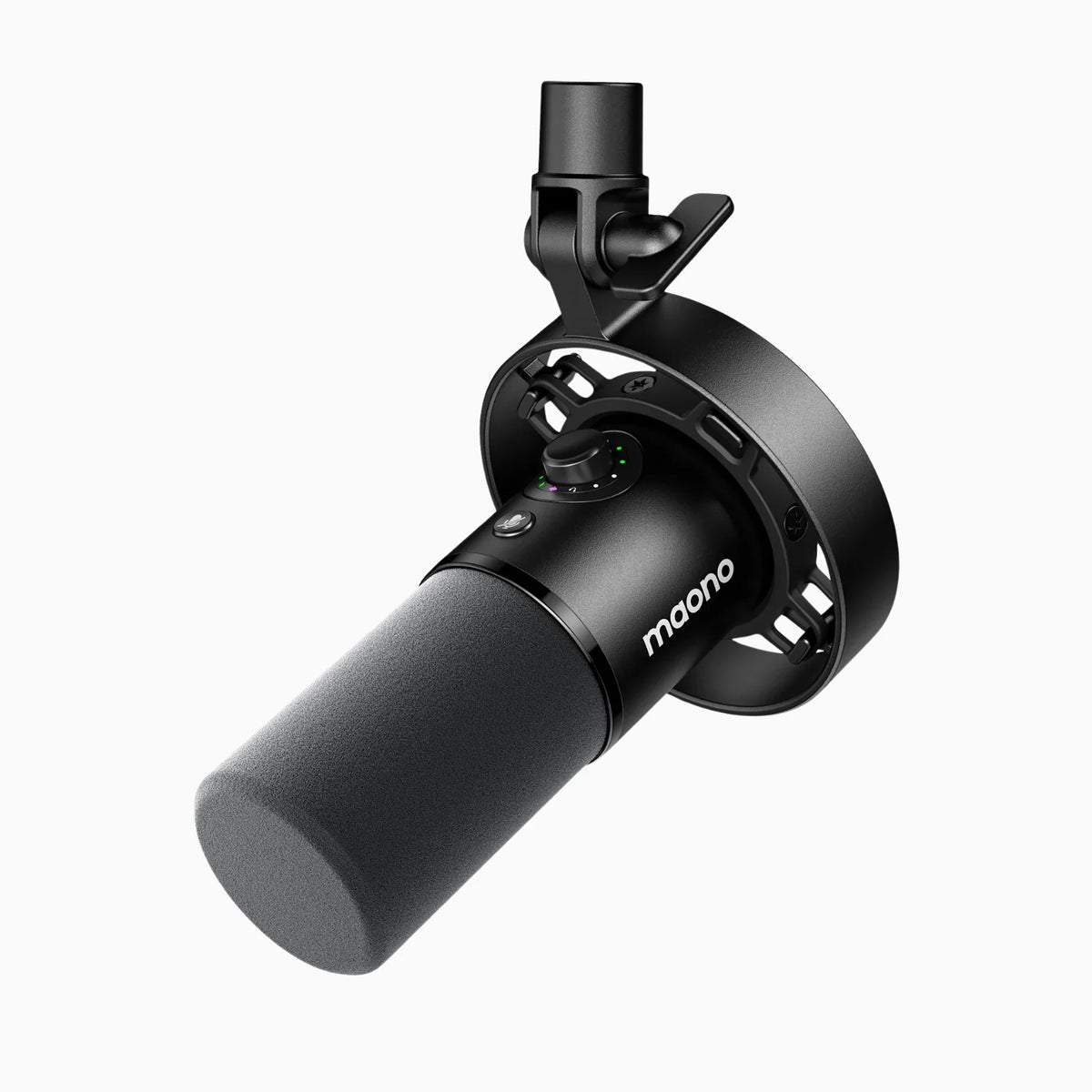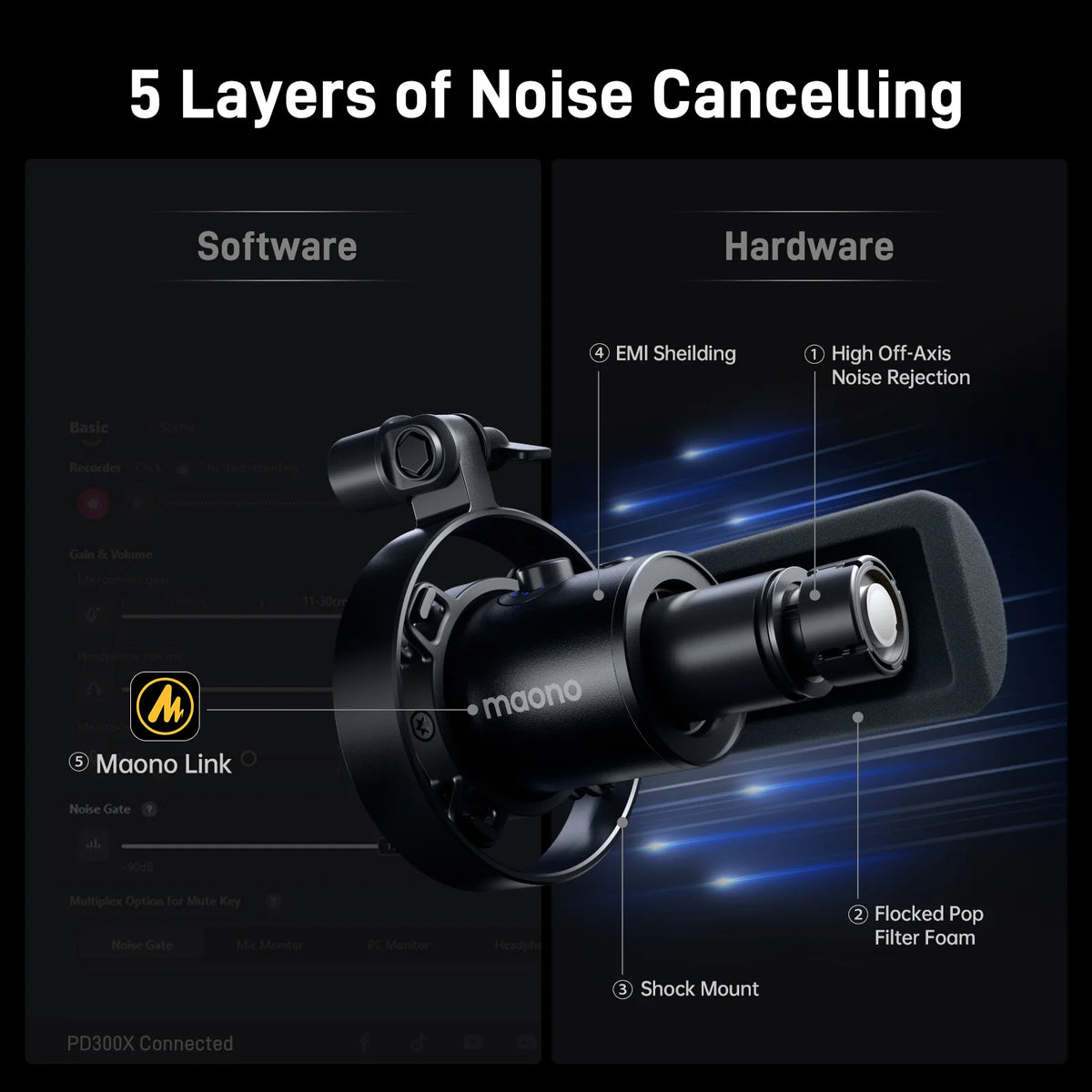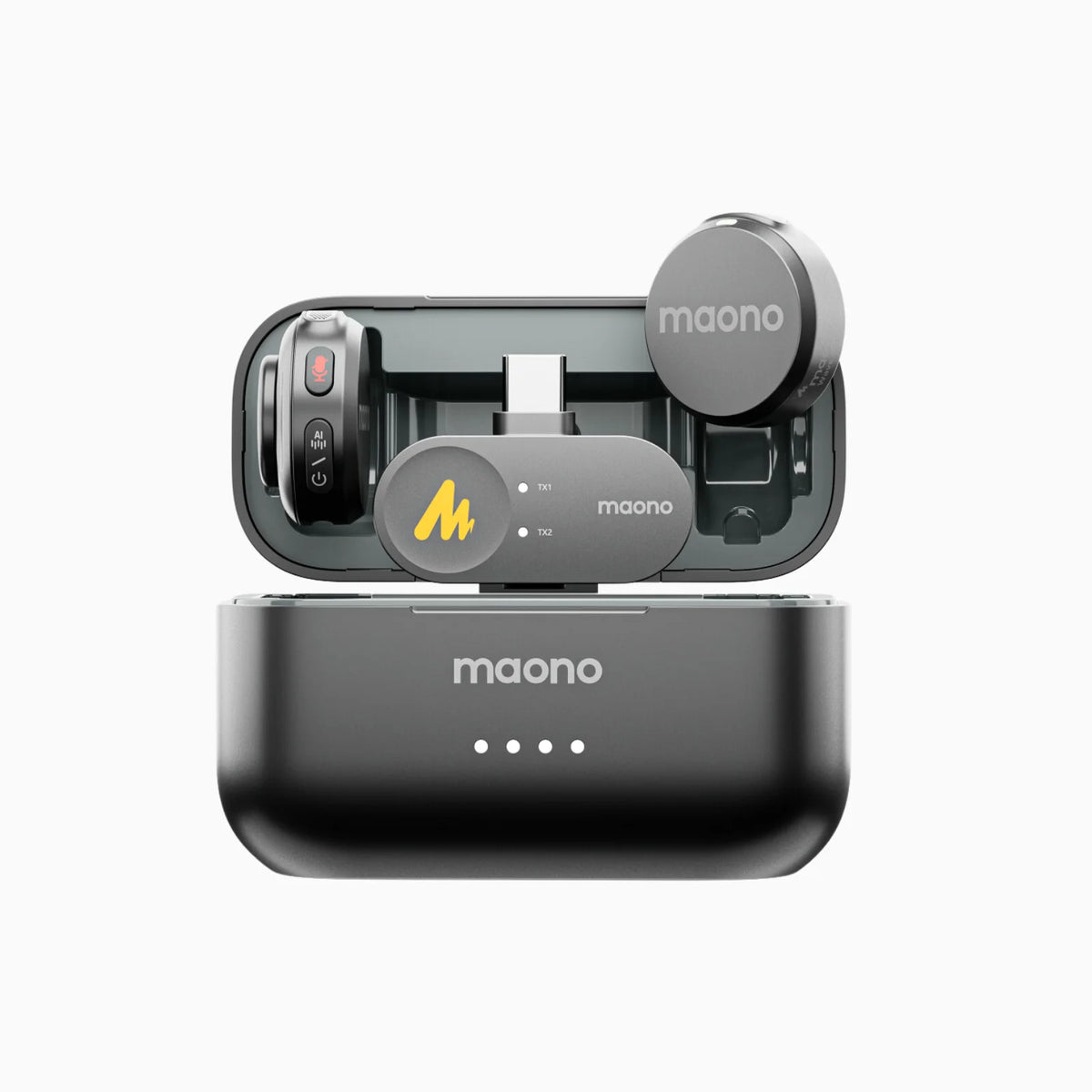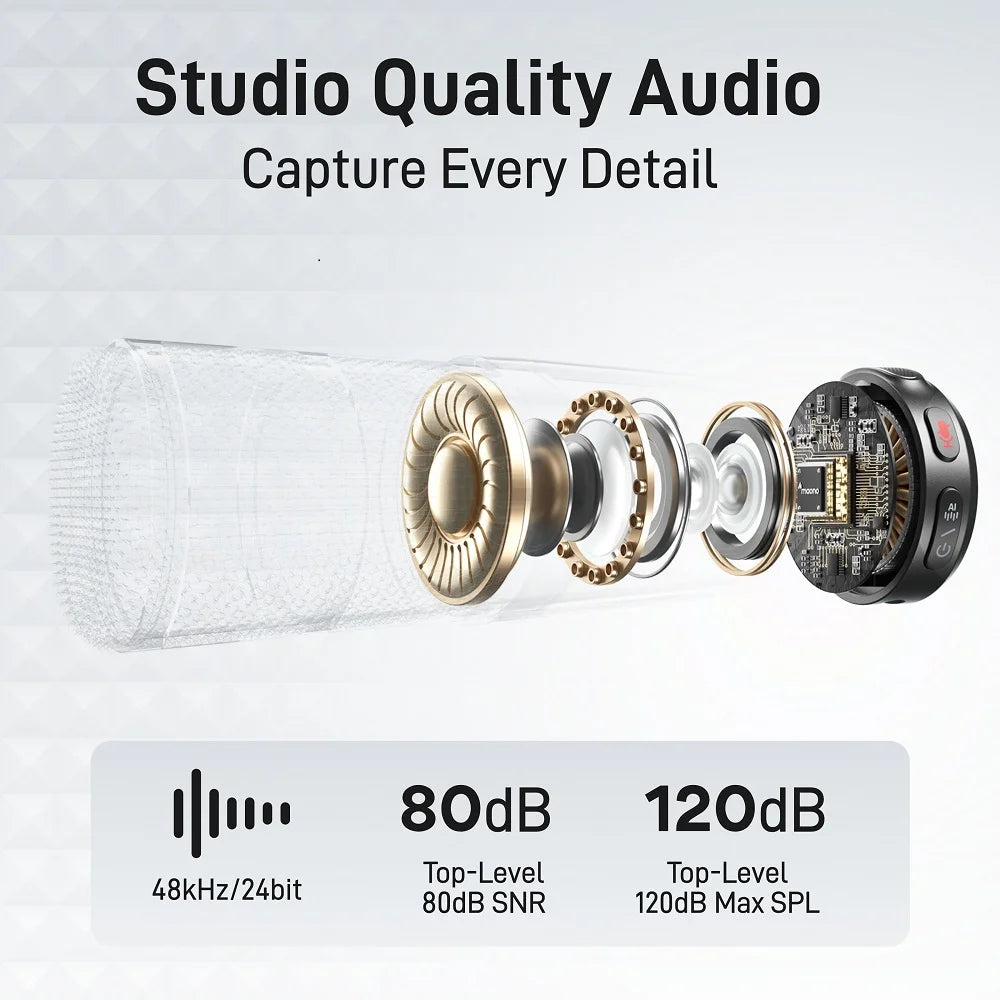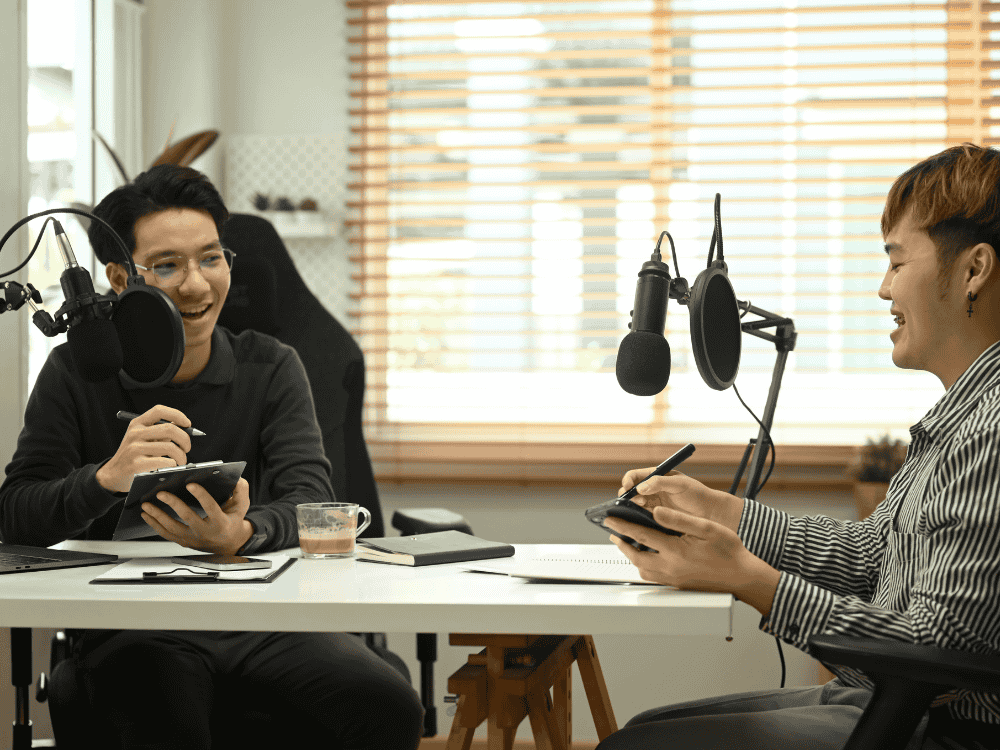For connectivity, we already learned that there are two types of microphones–the USB microphone and XLR microphone, but did you know that there are hybrid microphones too? Yes that’s right, we will explore the best USB/XLR podcast microphone that’s great for achieving high quality sound.
Whether you're a beginner or an experienced podcaster, selecting the best studio microphones can make a significant difference in your audio clarity and professionalism. Since podcasting has grown into a powerful platform for sharing ideas or information, storytelling, and building an audience, one of the most crucial aspects of a successful podcast is high-quality audio. The studio mic you choose can make all the difference in how professional your podcast sounds. Maono is a leading brand known for its reliable and budget-friendly USB/XLR studio mics tailored for podcasters. But how do you choose the right Maono microphone for a podcast? In this article, we will guide you in choosing the best podcast microphone USB/XLR that fits you.
How to Choose the Right Maono USB/XLR Microphone for Podcasting
When selecting a studio recording microphone, it's important to consider factors like connectivity, frequency response, and durability. Maono offers both USB and XLR options, making them suitable for different recording setups.
-
USB vs. XLR
If you’re a beginner, a USB microphone is a plug-and-play option requiring no extra gear. If you're a professional looking for higher sound quality and customization, an XLR microphone with an audio interface is ideal.
-
Polar Pattern
A cardioid polar pattern is best for podcasting as it captures sound from the front while reducing background noise.
-
Sound Quality
Look for a microphone with a wide frequency response and high sensitivity to ensure clear, rich audio.
-
Budget & Features
Maono offers options for all budgets, with features like built-in pop filters, gain control, and shock mounts for an enhanced experience.
What’s the Best Way to Connect a Maono USB/XLR Microphone to My Computer?
A USB studio microphone can be plugged directly into a computer, making it an excellent choice for convenience. For XLR studio microphones, an audio interface is required to connect to your system, offering greater control over sound quality.
-
USB Microphones: Simply plug the microphone into your computer's USB port. No additional setup is needed, making it ideal for beginners.
-
XLR Microphones: These require an audio interface or mixer to convert the analog signal into digital format before connecting to your computer.
-
Driver Installation & Settings: Most Maono USB microphones are plug-and-play, but it’s best to check your sound settings to select the correct input device.
What Maono Microphone Do You Recommend for Podcasting?
One of the best choices for podcasting is the Maono podcasting microphone kit, which includes high-quality studio microphones designed for clarity and precision. We recommend the Maono PD300X and the Maono PM461 bundle. These studio recording microphone options provide superior audio performance, making them the best podcast microphone choices for professionals and beginners alike.
Maono PD300X – The Professional’s Choice
-
Type: Dynamic XLR/USB Hybrid Microphone
-
Polar Pattern: Cardioid
-
Notable Features:
-
Hybrid connectivity (USB & XLR)
-
Built-in pop filter to reduce plosives
-
High-quality voice capture with low noise
-
Ideal for professional podcast setups
-
Why It’s Great for Podcasting: The Maono PD300X offers studio-level sound quality, making it a great choice for podcasters looking for professional clarity and versatility.
Maono PM461 Bundle – The Best Budget Podcasting Kit
-
Type: Condenser USB Microphone
-
Polar Pattern: Cardioid
-
Notable Features:
-
Plug-and-play functionality
-
Comes with a boom arm, shock mount, and pop filter
-
Great sensitivity for clear voice capture
-
Affordable option for beginner podcasters
-
Why It’s Great for Podcasting: This all-in-one Maono PM461 podcasting kit includes everything a beginner needs at an affordable price, making it a great budget-friendly option. (P. S. Check out the updating pricing of this microphone at Maono.com official website.)
Do I Need an Audio Interface for My Maono USB/XLR Microphone?
If you're using an XLR recording studio mic, an audio interface is necessary to process and enhance your sound. USB studio microphones, on the other hand, do not require an external interface, making them easier to set up and use.
-
USB Microphones: No audio interface is needed; simply plug in and start recording.
-
XLR Microphones: Yes, an audio interface or mixer is required to amplify and process the microphone’s signal.
-
Recommendation: If using an XLR Maono microphone, consider the Maonocaster AME2 audio interface for additional sound processing features.
Best Audio Settings and Software for Podcasting with Maono Mics
For optimal results with a studio recording microphone, adjust the gain settings to balance loudness without distortion. Popular software like Audacity, Adobe Audition, and GarageBand can enhance your recordings and provide tools for noise reduction and editing.
-
Sample Rate & Bit Depth: Set to 44.1kHz or 48kHz at 16-bit or 24-bit for clear audio.
-
Gain Adjustment: Adjust the gain so your voice is loud and clear without distortion.
-
Recommended Software:
-
Audacity (Free) – Great for beginners.
-
Adobe Audition – Professional-level editing.
-
GarageBand (Mac Users) – Easy-to-use recording software.
-
Maono Link Software – For fine-tuning sound with Maono USB microphones.
Common Mistakes to Avoid When Using Maono Microphones for Podcasts
-
Recording in Noisy Environments – Choose a quiet space to avoid background noise.
-
Incorrect Mic Placement – Position the microphone 6–12 inches from your mouth for the best clarity.
-
Ignoring Audio Levels – Avoid setting the gain too high to prevent distortion.
-
Not Using a Pop Filter – Reduces plosive sounds (like “P” and “B” sounds).
-
Skipping Post-Processing – Use noise reduction and equalization to enhance audio quality.
FAQs:
How to Reduce Background Noise in Podcast Recordings
-
Use a cardioid microphone to focus on your voice.
-
Record in a quiet, treated room.
-
Use noise reduction tools in editing software.
-
Adjust the gain properly to avoid picking up unwanted sounds.
How to Achieve Professional Podcast Sound with a Budget Setup
Investing in a microphone for podcasts like the Maono PD300X and using proper audio treatment techniques can help you achieve studio-quality sound affordably.
-
Use an affordable yet high-quality microphone like the Maono PM461 bundle.
-
Record in a small, quiet room with soft furnishings to reduce echo.
-
Use free editing software like Audacity for post-processing.
How Can I Prevent Echo and Reverb in My Recordings?
To minimize echo, record in a space with soft surfaces and use a studio microphone with directional pickup patterns to focus on your voice.
-
Record in a room with carpets, curtains, or foam panels.
-
Position the microphone correctly and speak close to it.
-
Use low reverb settings in editing software.
How Do I Edit My Podcast Audio for Professional Quality?
Use audio editing software to remove background noise, normalize levels, and enhance clarity. A studio mic with crisp audio capture will make post-production much easier.
-
Noise Reduction: Remove background hums and static.
-
Equalization (EQ): Enhance vocal clarity.
-
Compression: Maintain consistent volume levels.
-
Final Mix: Balance voice and background music for a polished sound.
Final Thoughts
Choosing the right Maono microphone can elevate your podcast quality, whether you’re a beginner or an experienced podcaster. The Maono PD300X is perfect for professionals, while the Maono PM461 bundle is a great budget-friendly option. By setting up your microphone properly, using the right audio settings, and following best practices, you can record a high-quality podcast like a pro. Start your podcasting journey today with Maono microphones for clear and professional audio. Hurry up and newcomers who sign up today can get up to a 10% discount!
Related Article:
How to Hook Your Audience with Great Audio Using a Dynamic USB/XLR Mic




